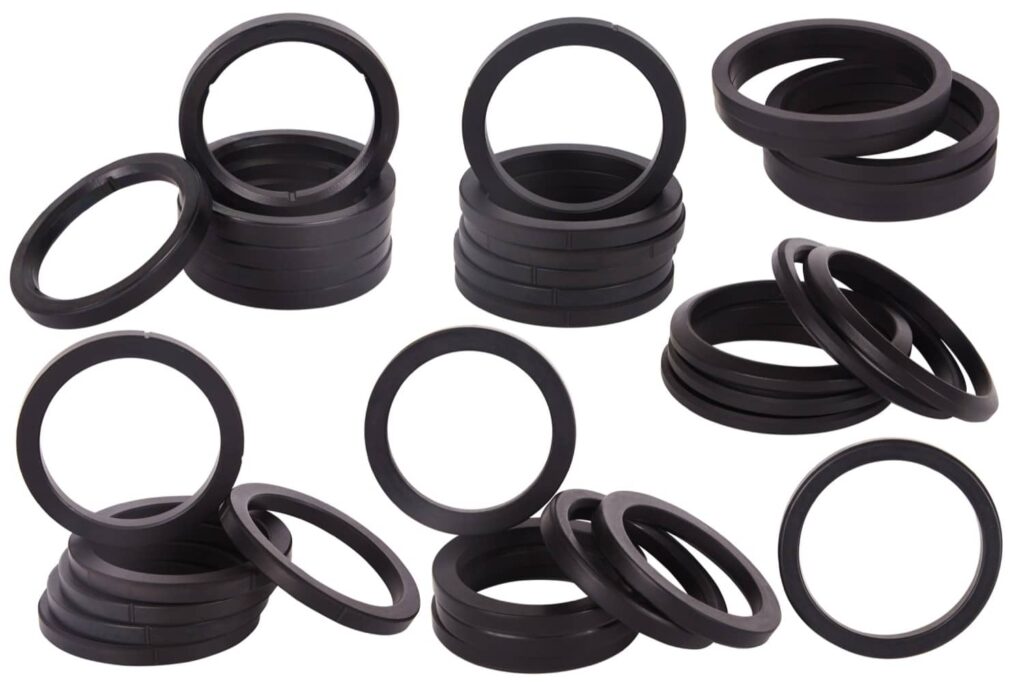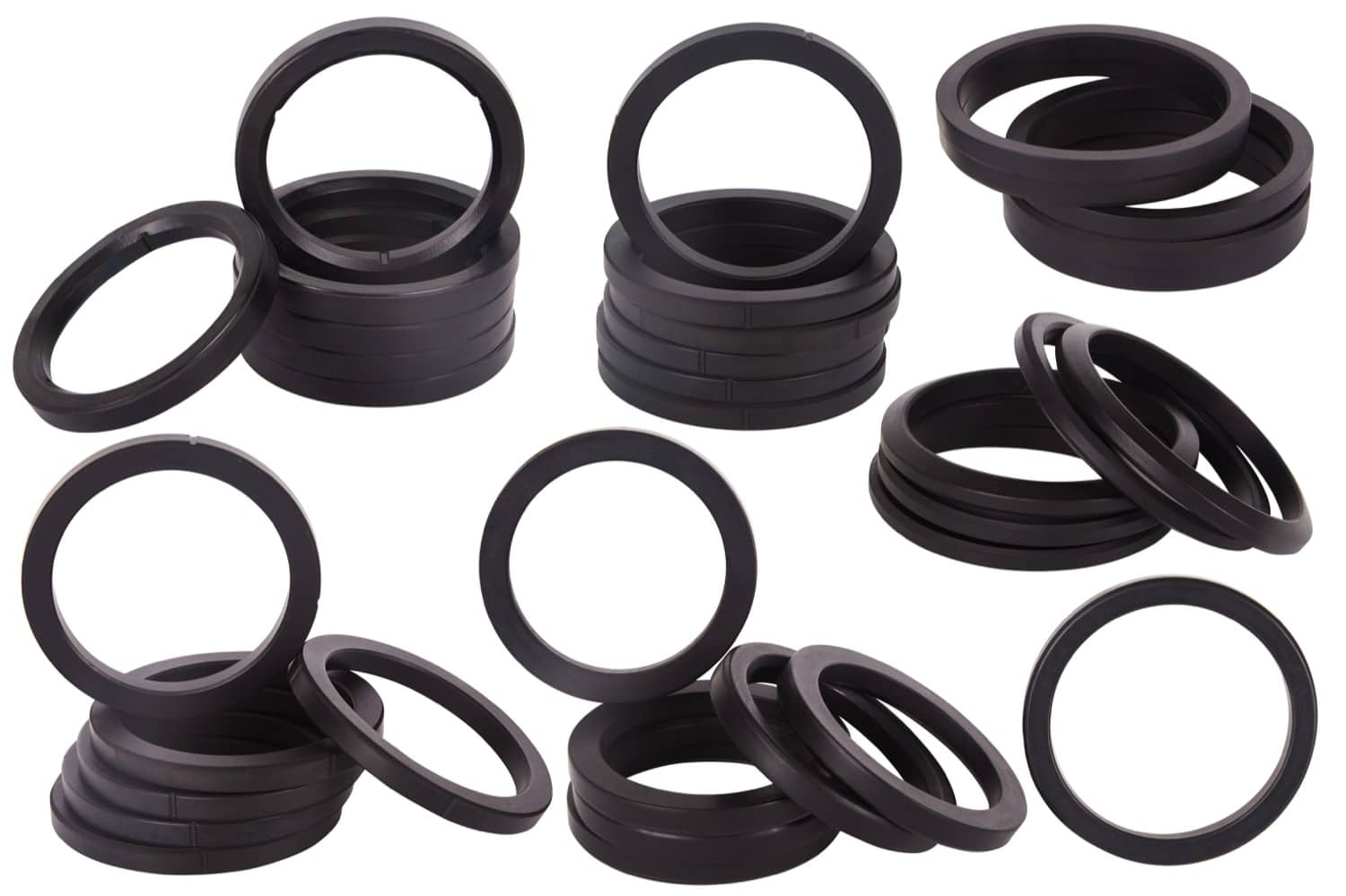
The Ultimate Guide to Lubricating Rubber Gaskets: Ensuring Longevity and Performance
Rubber gaskets are essential components in countless applications, from sealing pipes in plumbing systems to protecting sensitive electronics in aerospace technology. However, their effectiveness and lifespan are significantly impacted by proper maintenance, and lubrication is a critical aspect of that maintenance. This comprehensive guide delves into the importance of lubricating rubber gaskets, exploring the types of lubricants best suited for the task, the application techniques that yield optimal results, and the potential pitfalls to avoid. Understanding how to properly lubricate rubber gaskets is paramount to ensuring their longevity, preventing leaks, and maintaining the performance of the systems they protect.
Why Lubricate Rubber Gaskets? The Benefits Unveiled
The primary reason to lubricate rubber gaskets is to reduce friction. When a gasket is compressed or slides against another surface, friction can cause wear and tear, leading to premature degradation and eventual failure. Lubrication minimizes this friction, extending the gasket’s lifespan and preserving its sealing capabilities. Beyond friction reduction, lubricating rubber gaskets offers several other key benefits:
- Improved Sealing: Lubricants fill microscopic imperfections on the gasket surface, creating a tighter, more reliable seal.
- Easier Installation: Lubrication allows gaskets to slide into place more easily, reducing the risk of damage during installation. This is particularly important for tight-fitting gaskets or those used in complex assemblies.
- Protection Against Environmental Factors: Certain lubricants can protect rubber gaskets from the harmful effects of UV radiation, ozone, and chemical exposure, further extending their lifespan.
- Prevention of Sticking: Lubrication prevents gaskets from sticking to mating surfaces, making disassembly easier and reducing the risk of tearing or damage when the joint is opened.
Choosing the Right Lubricant: A Critical Decision
Selecting the appropriate lubricant is crucial for the success of any gasket lubrication program. Not all lubricants are created equal, and using the wrong type can actually damage the rubber or compromise its sealing properties. Several factors should be considered when choosing a lubricant, including:
- Rubber Compatibility: The lubricant must be compatible with the specific type of rubber used in the gasket. Some lubricants can cause swelling, shrinking, or degradation of certain rubber compounds.
- Operating Temperature: The lubricant must be able to withstand the operating temperature range of the application. High temperatures can cause some lubricants to break down, while low temperatures can cause them to become too viscous.
- Chemical Resistance: If the gasket will be exposed to chemicals, the lubricant must be resistant to those chemicals. Some lubricants can be dissolved or degraded by certain chemicals, compromising their lubricating properties.
- Application: The intended application will influence the lubricant choice. For example, food-grade lubricants are required for applications in the food and beverage industry.
Commonly used lubricants for rubber gaskets include:
- Silicone Grease: Silicone grease is a versatile lubricant that is compatible with a wide range of rubber compounds. It offers excellent water resistance, temperature stability, and chemical resistance.
- PTFE (Teflon) Grease: PTFE grease provides excellent lubricity and chemical resistance. It is often used in applications where the gasket is exposed to harsh chemicals or high temperatures.
- Glycerin: Glycerin is a water-soluble lubricant that is often used for lubricating rubber gaskets in plumbing applications. It is non-toxic and readily available.
- Mineral Oil: Mineral oil can be used to lubricate rubber gaskets, but it is important to ensure that it is compatible with the specific type of rubber. Some mineral oils can cause swelling or degradation of certain rubber compounds.
Always consult the gasket manufacturer’s recommendations for the appropriate lubricant to use. [See also: Types of Rubber Gasket Materials]
Application Techniques: Achieving Optimal Results
Proper application of the lubricant is just as important as choosing the right lubricant. The goal is to apply a thin, even coat of lubricant to the gasket surface, ensuring that all critical areas are covered. Here are some best practices for lubricating rubber gaskets:
- Clean the Gasket and Mating Surfaces: Before applying lubricant, thoroughly clean the gasket and mating surfaces to remove any dirt, debris, or old lubricant. Use a clean, lint-free cloth and a mild solvent if necessary.
- Apply a Thin, Even Coat: Use a brush, cloth, or applicator to apply a thin, even coat of lubricant to the gasket surface. Avoid applying too much lubricant, as this can actually reduce sealing performance.
- Focus on Critical Areas: Pay particular attention to areas where the gasket is most likely to experience friction or wear, such as the edges and corners.
- Reassemble the Joint: Carefully reassemble the joint, ensuring that the gasket is properly seated and compressed.
- Torque to Specification: Tighten any bolts or fasteners to the manufacturer’s specified torque to ensure proper sealing.
For O-rings, a slightly different technique is often used. The O-ring is typically rolled in the lubricant, ensuring that the entire surface is coated. This method helps to prevent twisting or damage to the O-ring during installation. [See also: O-Ring Installation Guide]
Potential Pitfalls: Avoiding Common Mistakes
While lubricating rubber gaskets is a relatively straightforward process, there are several potential pitfalls to avoid:
- Using the Wrong Lubricant: As mentioned earlier, using the wrong lubricant can damage the rubber or compromise its sealing properties. Always consult the gasket manufacturer’s recommendations.
- Applying Too Much Lubricant: Applying too much lubricant can actually reduce sealing performance by creating a path for leaks. A thin, even coat is all that is needed.
- Contaminating the Lubricant: Avoid contaminating the lubricant with dirt, debris, or other contaminants. Use a clean applicator and store the lubricant in a clean, sealed container.
- Neglecting Regular Maintenance: Lubrication is not a one-time event. Gaskets should be inspected and relubricated periodically to ensure optimal performance.
- Over-Tightening Fasteners: Over-tightening fasteners can damage the gasket and compromise its sealing properties. Always tighten fasteners to the manufacturer’s specified torque.
Specific Applications and Considerations
The specific type of application will often dictate the best lubricant and application technique. Here are a few examples:
- Plumbing: For plumbing applications, glycerin or a food-grade silicone grease is often used to lubricate rubber gaskets. These lubricants are non-toxic and safe for potable water systems.
- Automotive: In automotive applications, silicone grease or a synthetic grease is commonly used to lubricate rubber gaskets. These lubricants offer excellent temperature stability and resistance to automotive fluids.
- Aerospace: Aerospace applications often require specialized lubricants that can withstand extreme temperatures and pressures. PTFE grease or a high-performance silicone grease is often used.
- Medical Devices: Medical devices require biocompatible lubricants that are safe for contact with human tissue. Medical-grade silicone grease is often used.
The Science Behind Lubrication: Understanding the Mechanisms
The effectiveness of lubricating rubber gaskets stems from the fundamental principles of tribology, the study of friction, wear, and lubrication. Lubricants work by creating a thin film between the gasket surface and the mating surface, reducing direct contact and minimizing friction. This film can be formed through several mechanisms:
- Hydrodynamic Lubrication: In hydrodynamic lubrication, the lubricant film is thick enough to completely separate the two surfaces. This type of lubrication is typically found in high-speed, high-load applications.
- Boundary Lubrication: In boundary lubrication, the lubricant film is very thin, and some direct contact between the surfaces may occur. This type of lubrication relies on the chemical properties of the lubricant to reduce friction and wear.
- Elastohydrodynamic Lubrication: Elastohydrodynamic lubrication is a type of hydrodynamic lubrication that takes into account the elastic deformation of the surfaces under load. This is particularly important for rubber gaskets, as they are highly elastic.
The choice of lubricant will influence the type of lubrication that is achieved. For example, a high-viscosity lubricant is more likely to create a hydrodynamic film, while a lubricant with good boundary lubrication properties is more effective in applications where boundary lubrication is dominant.
Long-Term Benefits: A Proactive Approach
Lubricating rubber gaskets is not just a short-term fix; it is a proactive approach to ensuring the long-term reliability and performance of your equipment. By properly lubricating gaskets, you can:
- Reduce Downtime: Prevent leaks and failures that can lead to costly downtime.
- Extend Equipment Lifespan: Protect gaskets from wear and tear, extending their lifespan and reducing the need for frequent replacements.
- Improve Safety: Prevent leaks of hazardous materials, improving workplace safety.
- Reduce Maintenance Costs: Minimize the need for costly repairs and replacements.
Conclusion: Investing in Gasket Longevity
In conclusion, lubricating rubber gaskets is a simple yet effective way to ensure their longevity, prevent leaks, and maintain the performance of the systems they protect. By choosing the right lubricant, applying it properly, and avoiding common mistakes, you can significantly extend the lifespan of your gaskets and reduce the risk of costly failures. Remember to consult the gasket manufacturer’s recommendations and consider the specific requirements of your application when selecting a lubricant. Investing in a proper gasket lubrication program is an investment in the long-term reliability and performance of your equipment. Proper lubrication of rubber gaskets is a crucial step often overlooked. Make sure you lubricate rubber gaskets regularly to avoid future issues.

